
The best online fitness resource you'll ever need. We filter out the BS to ensure you meet your health and fitness goals!

The best online fitness resource you'll ever need. We filter out the BS to ensure you meet your health and fitness goals!
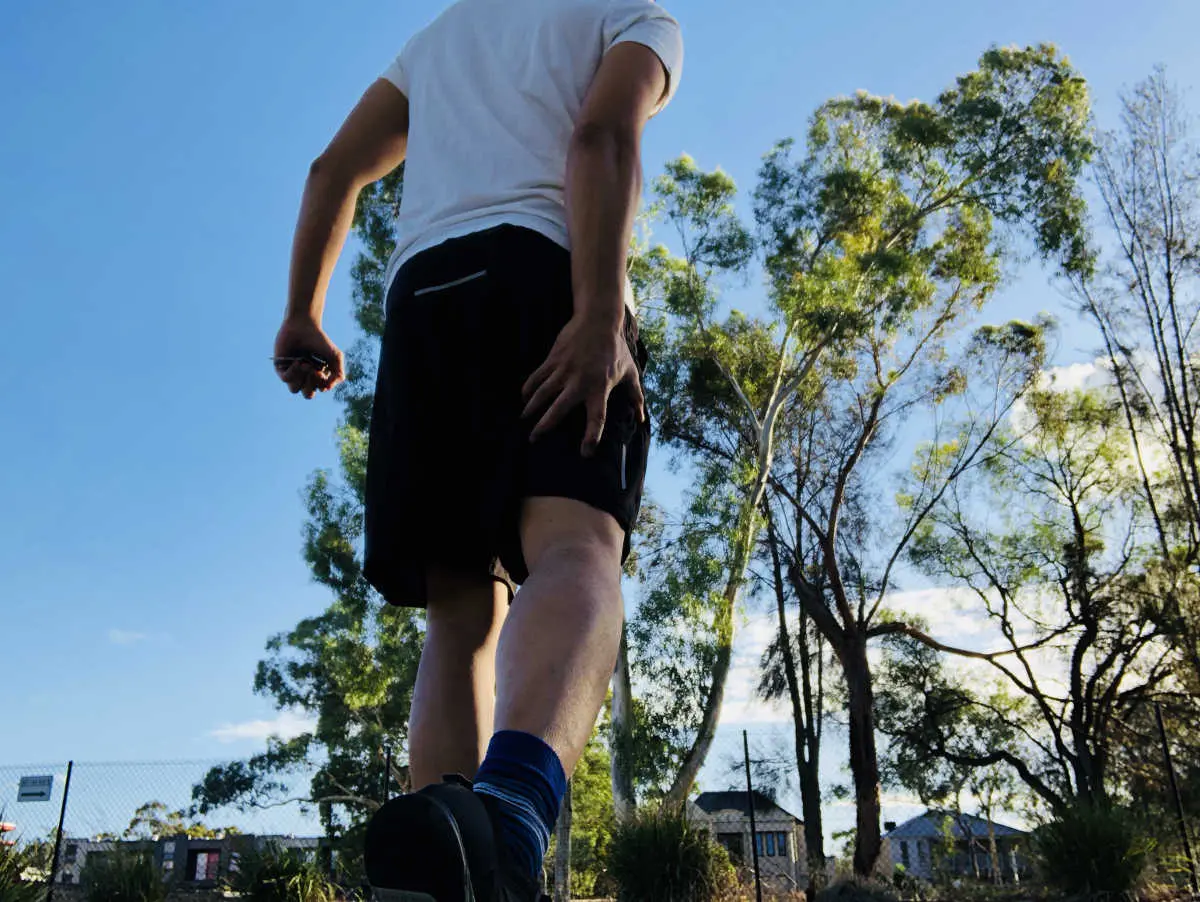
There’s no other way to put it, hamstring strains are as nasty as they are common. They plague many different athletes and active people and can be extremely difficult to rehabilitate. Knowing how to heal a hamstring strain fast could mean the difference between you being “benched” for weeks, or benched for months.
There are certain protocols you need to follow if you believe you’ve fallen foul of a hammy strain (or in extreme cases a full blown tear). But first you need to understand a few things about the muscle itself.
So you understand they’re the big ol’ muscles in the back of your thighs yes? Cool, but what you may or may not understand is the anatomy of the muscle group itself.
The hamstrings aren’t technically “strings”, as is common belief. They’re comprised of three separate muscle groups – the semitendinosus, semimembranosus, and biceps femoris muscles. All of them work together to flex at the knee.
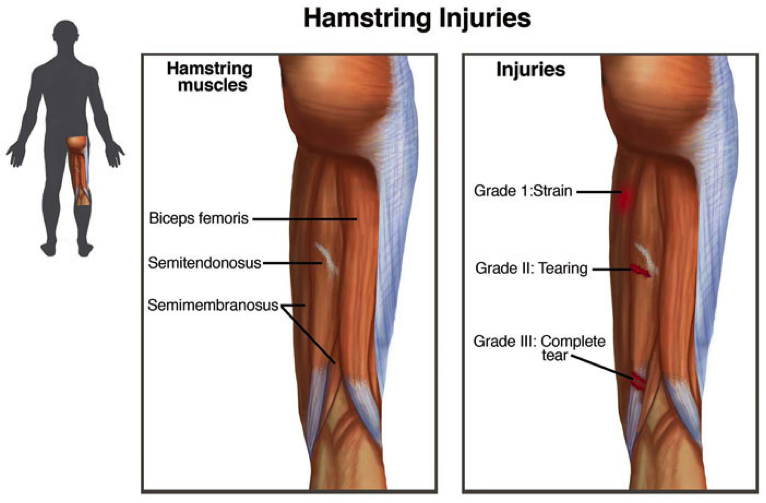
A hamstring strain or tear occurs when the muscle groups are overloaded. This causes the muscle fibers to tear within the muscles. So if you’re particularly active in sports like Football, Tennis, or Rugby for example, you’re far more likely to pick up this type of injury because of the sheer amount of running, and stopping and starting involved[efn_note]https://www.webmd.com/fitness-exercise/hamstring-strain#1[/efn_note].
Another sure fire way to pick up this sort of injury at some point or another, is if you don’t take your time and due diligence to warm up.
No, I’m not talking about the token hamstring stretch for 8 seconds; nor do I mean jogging a hundred yards and thinking “that’ll do the trick”. I mean properly warming up. More on that in a moment.
Another common cause of hamstring strains, is due to weakness in the glutes (your bum/derriere muscles).
Your glutes and hamstrings work together in tandem. If the glutes are weak, then your hamstrings are going to be overloaded in short order. This causes anything from a minor strain to a grade 2 or 3 tear. As a result, it will require at minimum, anywhere between 2-3 months recovery time, or possibly even surgery[efn_note]https://www.hss.edu/conditions_muscle-injuries-overview.asp[/efn_note].
The symptoms can vary, but one thing you can be sure of is some degree of pain down the back of the leg. It’s usually quite a sudden sharp pain after a particularly strenuous movement, like overreaching for a ball, or taking off from the starting line during a race when your muscles are still cold.
Some other symptoms to look out for include, but aren’t limited to:
Self diagnoses is all well and good, but you’d be best off getting yourself down to a physical therapist or doctors office, where they’ll ask you a number of questions and examine the injury. They will be able to provide a more accurate diagnosis.
So you’re now at the point where you’re sure it’s a hamstring strain, and you want the shortest possible rehab period so you can get back to doing what you love, right?
Well it’s possible to really speed the process up, but patience is required. Especially with this type of muscle group, re-injury often re-occurs if you don’t take your time with it. What I’ve done is lay out some key steps for you to follow to speed the whole recovery process up. The first is somewhat boring I’m afraid.
Rest – there’s no getting around it, you need to rest up to start with. The rest period will vary depending on the grade of tear. But you will need to keep your weight off of it for at least a couple of days (not ideal I know, but necessary for a full recovery). Speak to your doctor or therapist as you may require crutches.
Ice – Shortly after the strain occurs, you should utilise ice to bring the swelling down. Apply ice for 20 minutes each two to three hours for the first few days until the “heat” comes out of the injury. This is the inflammation in the muscle going down[efn_note]https://physioworks.com.au/treatments-1/what-to-do-after-a-muscle-strain-or-ligament-sprain[/efn_note].
Compression – Use a compression bandage to keep the swelling down. Again, this should only be done for 2 days, after which you want to encourage blood flow to the muscle in order for it to heal quickly.
Elevate – You’ll also need to elevate the leg as much as you can, again during the 2 day period after the injury occurred. I can’t stress enough, it really does depend on the severity of your injury as to how long you should carry this on. However, as a general rule of thumb, 2 days is effective.

Want to know the “secret” behind how to heal a hamstring strain fast?
Get a sports massage.
Massage is hugely effective at promoting the body’s natural recovery process, mainly due to the promotion of blood flow to the area[efn_note]https://www.livestrong.com/article/529939-massage-therapy-hamstring-injuries/[/efn_note].
This is something you’ll want to look at once the swelling and bruising has gone down. Be warned though, a sports massage isn’t exactly sunshine and roses. It, really, hurts.
But don’t let this put you off. It really can be of huge benefit in speeding the process up, not to mention it’ll prevent a build up of scar tissue in the muscle, preventing re-injury from occurring. I’d say that’s worth a punt, right? Right.
Now we’re at the stage of re-strengthening the muscle group.
Post tear the muscle will become weak and susceptible to re-injury. So it’s up to you to get in the gym and start the process of re-strengthening. You’ll also need to start strengthening the glutes too, as there’s a good chance a weakness here could cause another hamstring strain; again, due to the inability of the glutes to handle the load you’re putting through them.
You will also need to start gently stretching the hamstrings too. So the next time you lunge for that ball, or start off running a little quicker than your body is ready for, you won’t have that sharp pain shoot up your leg and into your butt.
Here are some great exercises that’ll strengthen the damaged muscle groups, as well as the supporting muscles (the glutes), helping prevent any future issues.
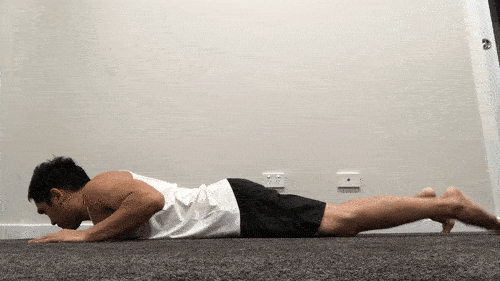
Repeat for 15 reps each leg. Take care not to feel any sharp pain whilst performing the movement, otherwise you risk further damage.
Glute Bridge:
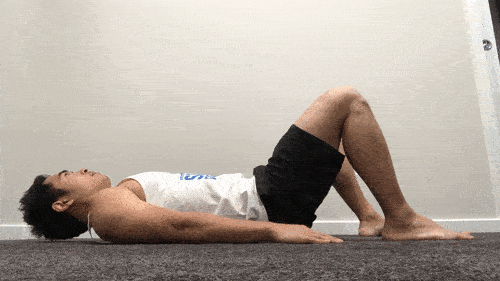
Repeat for 20 reps (if comfortable). Again, take care not to feel sharp pain at any point where the injury occurred. This exercises will strengthen the glutes, giving the hamstrings more support overall.
One Legged balancing:
This one is pretty self explanatory and incredibly simple. But don’t be fooled, it’s extremely effective at strengthening the muscles that bring stability to your pelvis, including the smaller glute muscles (there’s three of them!)
If your balance is reasonable, you may want to close one, or both eyes to increase the difficulty.
Hamstring stretch:
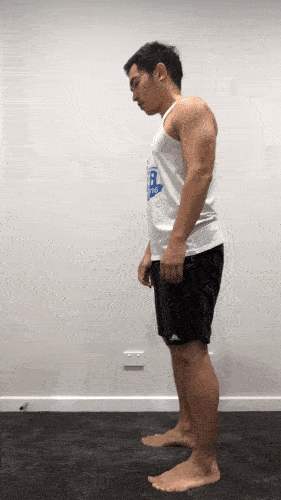
With this one be especially careful not to take the stretch to a point of discomfort. Depending on the grade of your tear, you may do more damage than good! So always listen to your body and take your time.
Now at this point I strongly recommend you seek advice from a physical therapist regarding the specific stretches and exercises. It’s a minefield out there and doing the wrong thing at the wrong time could set your recovery back weeks, or even months.
So whereas these exercises are great for rehabbing hamstring strains, they may not be suitable for you. A good Physical Therapist will be able to give you full guidance on your specific issues.
So there you have it, solid steps to get you heal your hamstring strain fast. Remember though, prevention is always better than cure. So even if you don’t suffer right now from a hamstring strain, make sure you take note of steps two and three. That way you won’t ever need to suffer a hamstring strain again.
Have you tried any of this before? Did it help you with your injury?
We’d love to hear from you!